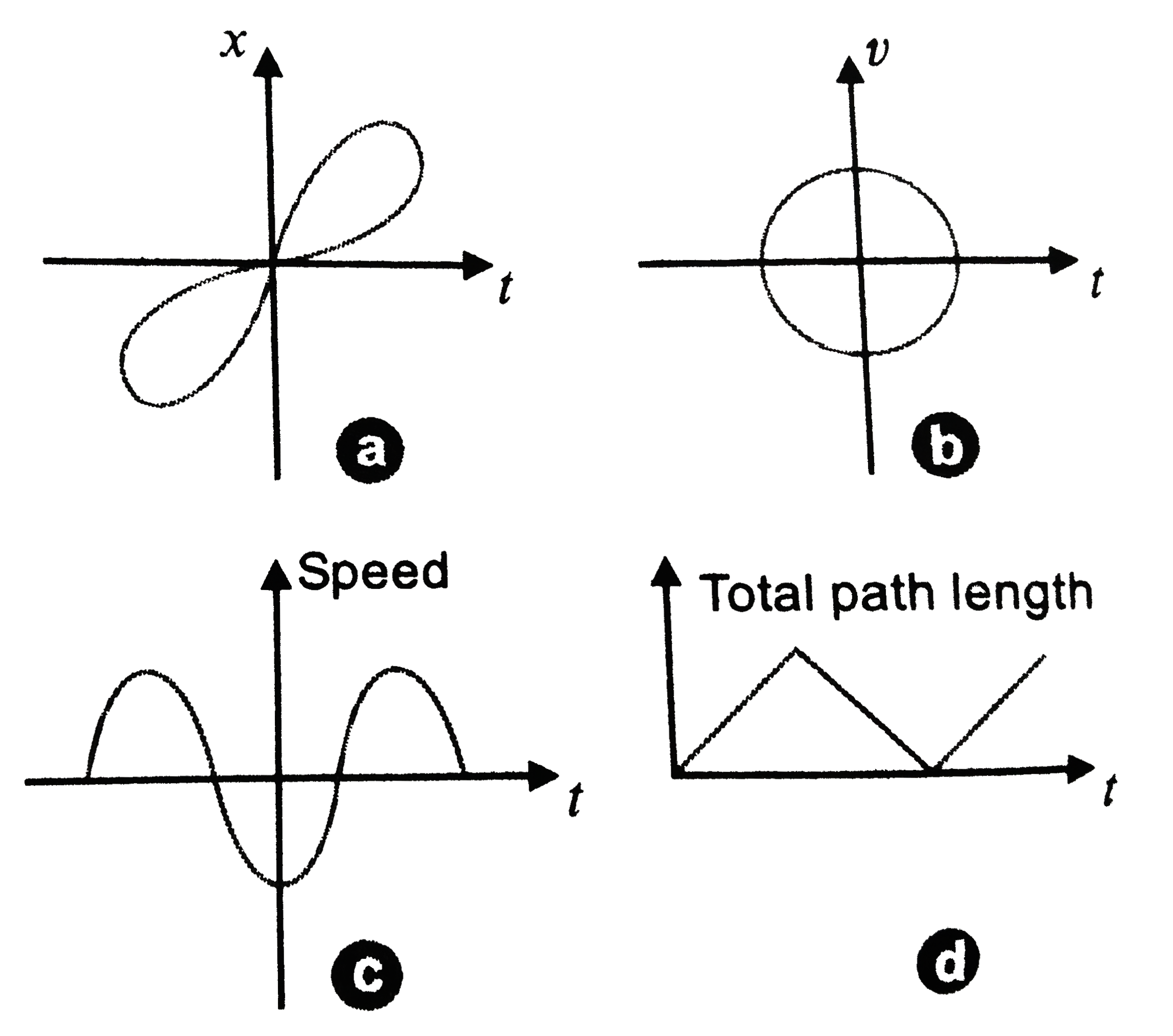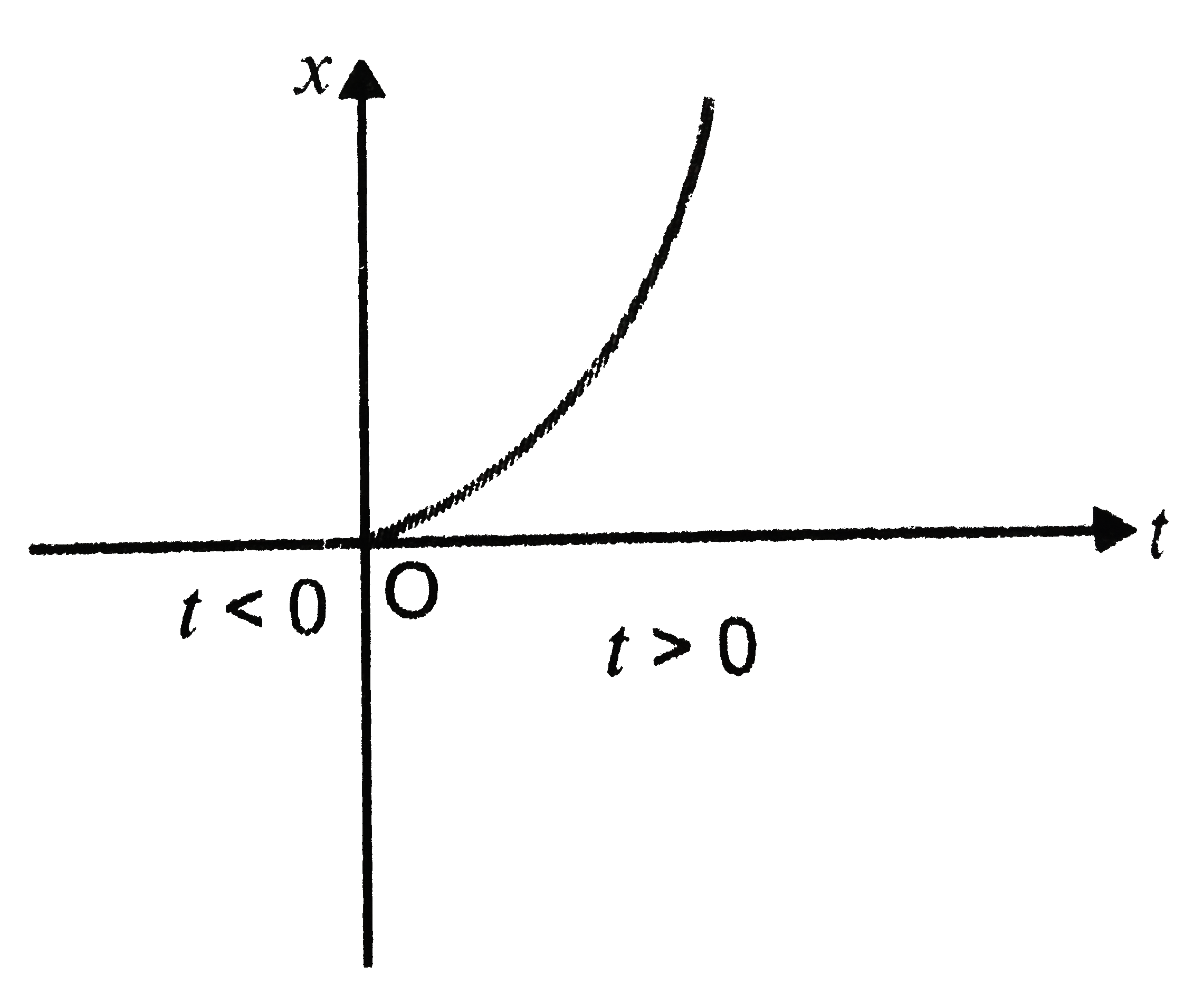Complete Solutions to NCRT Exercises of chapter KINEMATICS of Class 11 book with complete answers and questions
| Class 11 | PHYSICS |
| Chapter | KINEMATICS |
| PRADEEP | NCRT Exercises |
| Number Of Questions | 22 |
| Academic Year | 2023-24 |
In which of the following exmples of motion, can the body be considered approxinmately a point object :
(a) a railway carriage moving without jerks between two two stations.
(b) a mondey sistting on top of a man cycling smoothly on a circulat track. (c ) a spinning cricket ball that turns sharply on hitting the round . (d) a tumbling beake theat has slopped off the edge of a table ?03:10View SolutionThe position-time (x-t) graphs for two children `A` and `B` returning from their school `O` to their homes `P` and `Q`, respectively, are shown in . Choose the
 .
.
a.` (A//B)` Iives closer to school than `(B//A)`.
b. `(A//B)` starts from the school earlier than `(B//A)`.
c. `(A//B)` walks faster than `(B//A)`.
d. `A` and `B` reach home at the (same//differnt) time.
e. (A//B) overtakes on the road (once//twice).05:35View SolutionA woman starts from her home at `9.00` a. m., walks with a speed of `5 km h^(-1)` on straight road up to her office `2.5 km`away, stays at the office up to `5.00 p. m.`, and returns home by an auto with a speed of `25 kmh^(-1)`. Plot the position-time graph of the woman taking home as origin.
03:38View SolutionA drunkard waking in a barrow lane takes ` 5` steps forward and `3` steps backward, followed again `5` steps forward and `3` steps backward, and so on. Each step is ` 1 m`long and requires 1 s`. Determine how long the drunkard takes to fall in a pit ` 13 m` away from start.
02:48View SolutionA jet airplance travelling at the speed of ` 500 km ^(-1)` ejects its products of combustion at the speed of ` 1500 km h^(-1)` relative to the jet plane. What is the speed of the later with respect to observer on the ground ?
02:31View SolutionA car moving aling a straight highway with speed of ` 126 km h^(-1)` is brought to a stop within a distance of ` 200 m`. What is the retardation of the car (assumed uniform ) ans how doest it take fro the car to stop ?
01:42View SolutionTwo trains ` A and B` of length `400 m` each are moving on two parallel tracks with a uniform speed of ` 72 km h^(-1)` in the same direction with ` A ahead of B` . The driver of ` (A) , what was the originaldistance between them ?
04:35View SolutionOn a two lane road , car (A) is travelling with a speed of `36 km h^(-1)`. Tho car ` B and C` approach car (A) in opposite directions with a speed of ` 54 km h^(-1)` each . At a certain instant , when the distance (AB) is equal to (AC), both being ` km, (B) decides to overtake ` A before C does , What minimum accelration of car (B) is required to avoid and accident.
04:14View SolutionTwo towns `A` and `B` are connected by a regular bus service with a bus leaving in either direction every `T` min. `A` man cycling with a speed of `20 km h^(-1)` in the direction `A` to `B` notices that a bus goes past him every `18 min` in the direction of his motion, and every `6 min` in the opposite direction. What is the period `T` of the bus service and with what speed (assumed constant )do the buses ply on the road?
07:39View SolutionA player throws a ball upwards with an initail speed of 129.4 ms^(-1)` (a) What is the direction of acceleration during the upward motion of the ball ? (b) What are the velocity and accleration of the ball at the ighest point os its motion. ( c) Choose the ` =x 0 aand ` t= 0` be the loction and time at its highest point, vertically downward direction to be the positve direction of ` X-axis and give the signe of position, velocity and accelration of the ball during its upward, and downward motion. (d) To what hight does the ball rise and after how long does the ball returns to the plausr`s hands. (Take g= 9.8 ms^(-23)` and begleact air resistance)
04:34View SolutionRead each staremnt below carefully and state with reasons and expamples if it is true or false ,
(a) with zero speed at an instant may have non-zero accelration at that instant
(b) with zero speed may have non-zero velocity
(c ) with positive speed must have zero accleration
(d) with positive value of acceleration must be speeding up.03:19View SolutionA ball is dropped from a height of a height of 90 m on a floor. At each collsion with the floor , the ball loses one - tenth of its speed . Plot the speed -time graph of its motion between t 0 to 12 s.
08:44View SolutionExplain clearly, with ezamples, the distaintion between :
(a) magnitude of displacemnt (sometimes called distance ) overand interval of time, and the total length of the path coverd by a particle over the same interval.
(b) magnitude of average velocity over an intercal of time , and the average speed ocer the same interval. [ Average speed of a particle over an interval of time is defined as the toal path length divided by the time intrval]. Show in both (a) and (b) that the second quantity is either greater than or equal to first. When is the equality sing true ? [ For simplocity, consider one- dimensional motion only]04:15View SolutionA man walks on a straight road from his home to a market ` 2.5 km` away with a speed of `5 km //h`. Finding the market closed, he instantly turns and walks back with a speed of `7.5 km//h`. What is the (a) magnitude of average velocity and (b) average speed of the man, over the interval of time (i) `0` to 30 min `. (ii) 0 to 50 min (iii) 0 to 40 min ?
07:08View SolutionIn abave questions ` 13 and 14`, we have carefully distinguished between average speed and magnitude of average velocity. No such distainction is necessary when we considedr speed and magnitude of velocity. The instantneoud speed if alwary equal to the magnitude of nistantaneous velocity. Why ?
03:04View SolutionLook at the graphs Fig. 2 (NCT) .5.(a) to (d) carefully and state, with reasons, with of these connot possinly represent on edimensional motion of a particle.
 02:50View Solution
02:50View SolutionFig. 2 (NCT). 6 shows ` x-t` plot of one dismensional motion a particle. Is it correct to say from the graph that the particle moves in a straight line for ` t lt 0 `and on a parabolic path form ` t gt 0 `? If not, suggest a suitable physical contxt for this graph.
 01:47View Solution
01:47View SolutionA police van moving on a highway with a speed of `30 km h^(-1)` Fires a bullet at a thief's car speeding away in a same direction with a speed of `192 km h^(-1)`. If the muzzle speed of the buller is `150 m s^(-1)`, with what speed does the bullet hit thief's car? .
 .04:39View Solution
.04:39View SolutionSuggest a suitable phusical situation for each of the following graph . Fig. 2 (NCT) .7.
07:10View SolutionFig 2 (NCT).8 gives the ` x-t` plot of a particle executing one dimensional simle harmonic motion. Give the signs of position, velocity and acceleration variables of the particles at ` t= 0.3 s`, ` 1.2 s, - 1. 2 s`,
 03:33View Solution
03:33View SolutionFig. 2 (NCT).9 show the ` x-t` plot of a particle in one dimensional motion. Three different equal intervals of time are shown. In which interval the average speed is greatest and in which it is the least ? Give the sign of average speed for each interval.
 .02:32View Solution
.02:32View SolutionFig. 2 (NCT). 10 . Give a speed-tiem graph of a particle in one dimenstional motion. Three different equal intervals of time are shwon. In which interval is the average acceleration graeatest in magnitude ? In which interval is the average speed greatest ? Choosing the positive direction as the constant direction of motion, give the signs of `u` and `a` in the three intervals. What are the acclerations at teh points ` A, B , C` and ` D` ?
 .05:52View Solution
.05:52View Solution
NCRT Exercises questions and complete solutions for chapter KINEMATICS of PRADEEP PHYSICS (HINGLISH) of Class 11
All Exercises from PRADEEP Class 11 PHYSICS KINEMATICS
- 1 Problems for practice
- 1 Con ceptual Problems
- 1 Conceptual Problems
- 1 Fill in the blanks
- 1 Long answer
- 1 Multiple choice
- 1 NCERT Assertion-Reaseon Type
- 1 NCERT Comprehension
- 1 NCERT multiple
- 1 Short answer
- 1 SolvedExamples
- 1 Very short
- 2 Con ceptual Problems
- 2 Fill in the blanks
- 2 Long answer
- 2 Multiple choice
- 2 NCERT multiple
- 2 Problems for practice
- 2 Short answer
- 2 SolvedExamples
- 2 Very short
- 3 Con ceptual Problems
- 3 Fill in the blanks
- 3 Long answer
- 3 Multiple choice
- 3 NCERT multiple
- 3 Problems for practice
- 3 Short answer
- 3 SolvedExamples
- 3 Very short
- 4 Con ceptual Problems
- 4 Conceptual Problems
- 4 Fill in the blanks
- 4 Long answer
- 4 Multiple choice
- 4 NCERT Integer type
- 4 NCERT multiple Choice
- 4 Problems for practice
- 4 Short answer
- 4 SolvedExamples
- 4 Very short
- 5 Long answer (NCERT)
- 5 Short answer
- 5 Very short
- 6 Long answer (NCERT)
- 6 Short answer
- 6 Very short
- Additional Exercises
- Advanced Problems
- Higher order thinking skills
- Motion
- NCRT Exercises
- Sample Promlem
- Value based
